Autonomous Real-time Marine Mammal Detections
Woods Hole Oceanographic Institution
Gulf of Maine, Winter 2019-2020
Study objectives
A Slocum G2 glider was deployed in the northern Gulf of Maine to conduct a near real-time survey for baleen whales, including the seriously endangered North Atlantic right whale.
Principal Investigators: Mark Baumgartner (WHOI) and Sofie Van Parijs (NOAA NEFSC)
Analyst: Genevieve Davis (NOAA NEFSC)
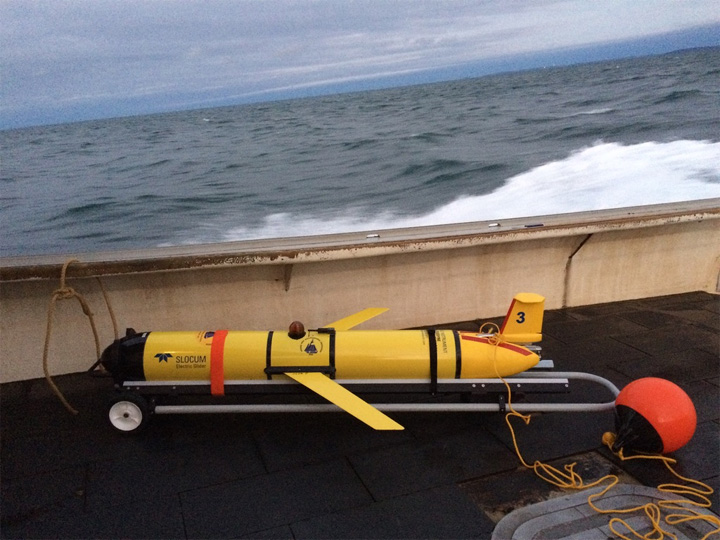
Platform location:
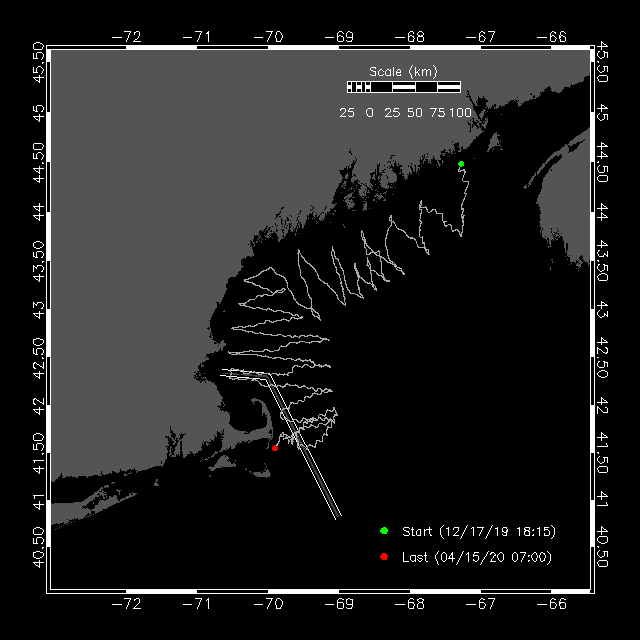
Analyst-reviewed species occurrence maps:
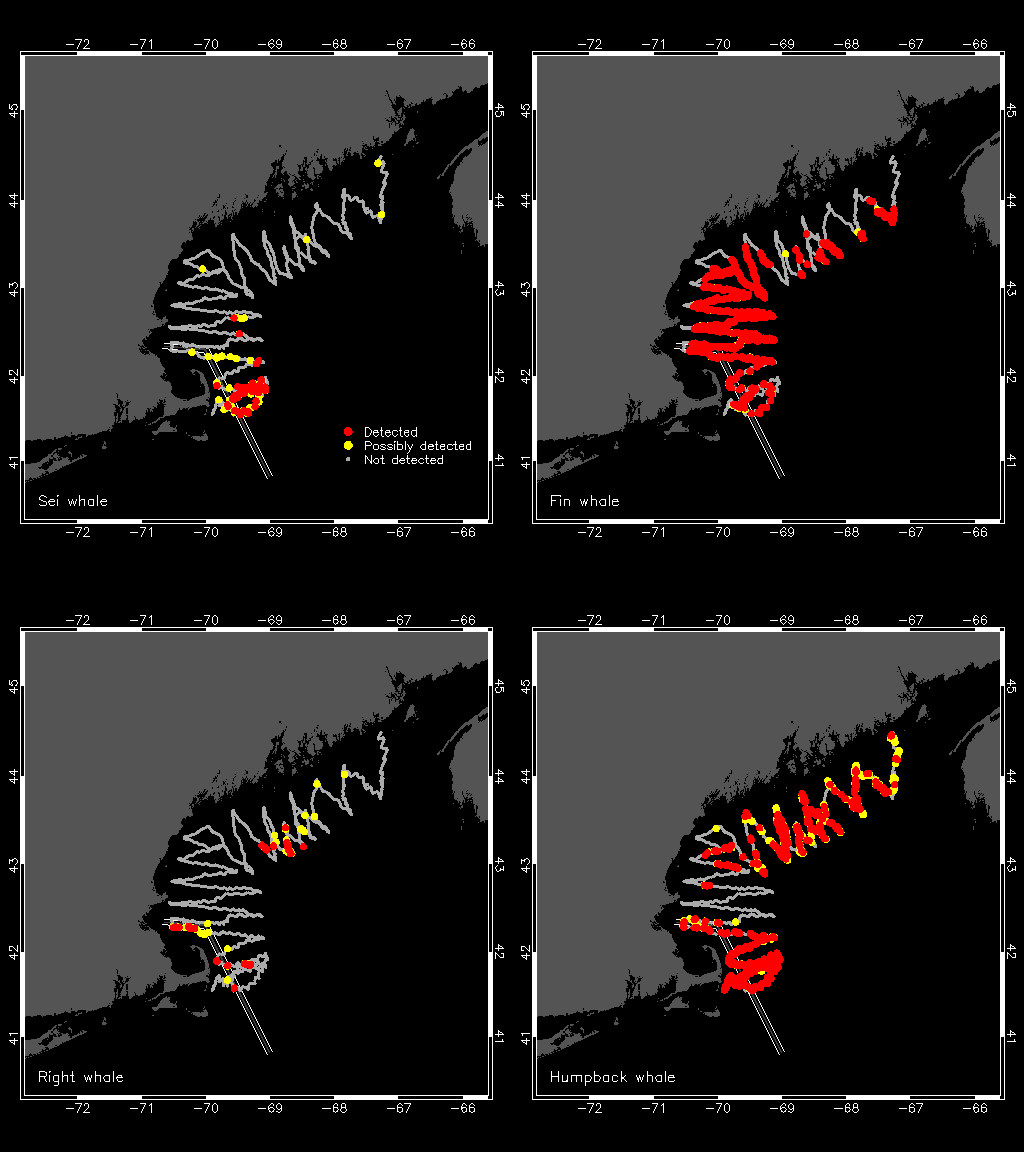
Daily analyst review:
| | Detected |
| Possibly detected |
| Not detected |
Time series:

Diel plot:
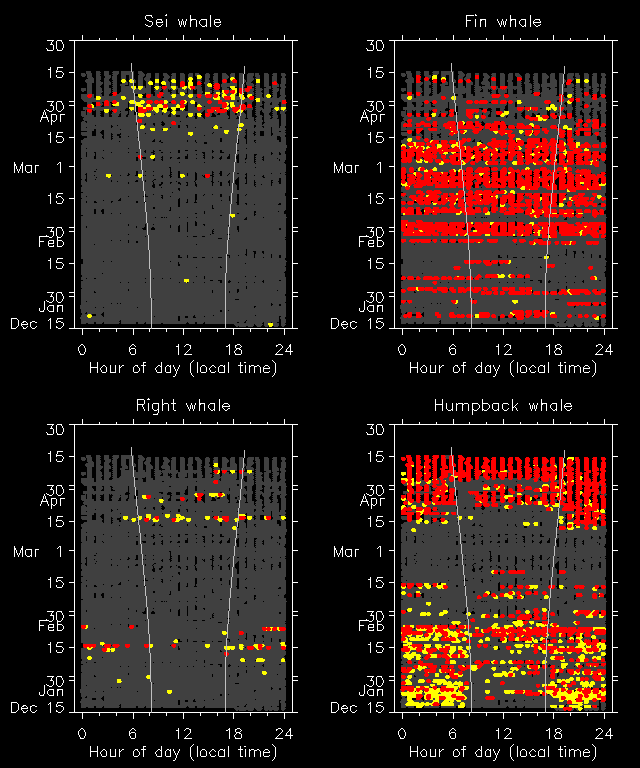
Recent bacgkground noise:

Oceanographic observations:
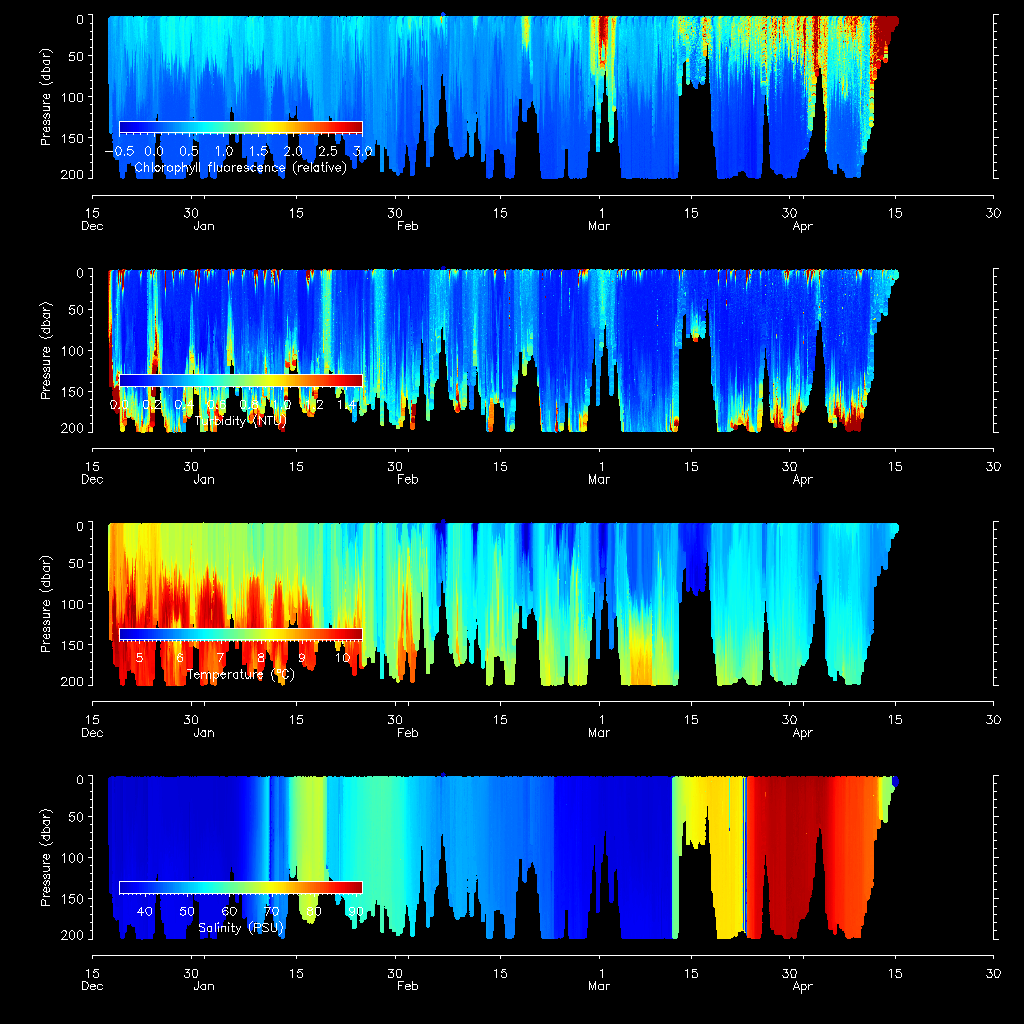
Links to detailed information:
Automated detection data
DMON/LFDCS Diagnostics
Platform diagnostics
Sounds
What types of sounds are we monitoring? Find examples of the sounds right, fin, sei and humpback whales make here.
Questions
Please email Mark Baumgartner at mbaumgartner@whoi.edu. For a general desciption of the detection system and the autonomous platforms, visit dcs.whoi.edu.
Acknowledgements
The Slocum glider was expertly prepared by Ben Hodges (WHOI). Support for the development and testing of the DMON/LFDCS was provided by the Office of Naval Research, and additional support for integration and testing was provided by the NOAA National Marine Fisheries Service Advanced Sampling Technologies Working Group in collaboration with the Northeast Fisheries Science Center's Passive Acoustics Research Group (leader: Sofie Van Parijs).
Home






